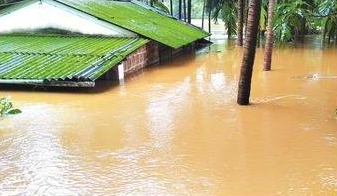
Binayak Datta
This was a World Meeting, (Conference of Parties, 26th Session), Heads of Governments, their ministers and their bureaucrats in tow, deliberate for 2 weeks and finally a push-and-pull declaration.
A run-down on the actions of the previous conference, the COP25, Madrid, who will do what now, what the milestones are, how much funds should be spent, who’s giving how much and when, finally what happens if somebody defaults and if you were expecting all of that, I’m sorry!
Now, before I proceed further, a bit of recapitulation is ideal here. This Conference held annually involves everybody, seeks a global response to actual climate changes from over 130 countries and aims at commitments of each to control carbon emissions (Carbon dioxide and Methane mostly), so that the atmosphere does not heat the earth up in its green-house effects beyond a target of 1.5 degree Celsius than its temperatures in the pre-industrialisation days of 1930.
Mark Twain in his typical style had remarked 130 years ago, “Climate is what we expect – Weather is what we get”; so, we speak “climate” here, not “weather”, the difference is, in the long-term conditions – obviously!
Impacts: I’ll just take a minute off and try and explain what a degree of “Global Warming” in fact means, in lay-man’s words. I looked into a report by the Intergovernmental Panel on Climate Change (Special Report on Global Warming of 1.5º Celsius), NASA (IPCC Report, June 2019) and its findings are not only interesting, they are scary! Again, this 1.5 degree is the World-average. Many regions totaling to where 1/5th of humanity stays, have already exceeded 2 degrees. The findings were, each degree of warming will involve a) Temperature extremes, Draught, Water Scarcity, Extreme Rainfall and Frequent “Cloud Bursts”, Degraded Bio-Diversity in the form of extinction of species and drying up of rain-forests, (to elucidate, even at 1.5 degrees increase, 8% of plants and 4% of vertebrates have been projected to reduce in numbers, by half!). Another study, based on 25 years of data, projects the sea-level will increase by 26 inches by 2100 (Godard Space Centre-NASA), causing complete alteration of coast-lines and vanishing of many islands. For a moment, just think of the Panjim Promenade or the Ribander Causeway in high-tide!
Effects on humans are even more ghastly, with acidity increasing in ocean waters and oxygen levels decreasing. Heat-related illnesses and vector-borne diseases will rise. Are we not facing most of these symptoms already, the Himalayan floods every year, unprecedented rains in Tamil Nadu, round-the-year rains in Goa? Remember the heavy flooding in central China recently, killing more than 300 people or the western United States’, searing heat-wave which strained power grids and water supply.
My Take: I think somewhere, the subject has been perennially viewed as an international media event, more so by the rich countries while climate-awareness in developing economically-constrained countries continue to be pathetic. The richer nations think nothing of defaulting and delaying on financial commitments, the economically-constrained ones care nothing for CO2 emissions when it comes to burning stubbles or celebrating with lakhs of Diya or tons of fire-crackers, but everybody is seen in these international jamborees as long as the international media is present in their strength.
Good, this was the first-ever COP to explicitly admonish fossil-fuels, one of the leading causes of greenhouse-gas emissions, or to put limits on the use of coal, the dirtiest fossil-fuel, coal is estimated to be responsible for almost one-third of warming. But the final agreement was completely diluted by some of us, when we reportedly insisted on “phasing down,” not “phasing out,” coal use.
Of all carbon emitters in the World, China happens to be the biggest polluter with more than 10bn tons of CO2 emissions a year, followed by US (around 5bn tons) and India 3rd (around 3bn tons). India consumes energy, 55% of which is coal-based and not even 10% is from renewable sources today. We have a capacity of 97 Giga-Watts (GW) of Renewable Energy, so our first commitment this year was to increase this capacity to 500 GW by 2030. Our 9% share of Renewable Energy in use, will be increased to 50% by 2030. Our third commitment - reduce emissions by 1bn tons by 2030. Our 4th commitment was to reduce emission intensity (emissions per unit of GDP) by 45% compared to 2005 by 2030 (we are done around 25% today) and our last commitment was to have Carbon Net-Zero (which means we will reduce as much carbon as we emit in a year) by 2070. All of these are time bound targets and there needs to be ground-level actions, funding thereof, reporting and monitoring, the “how” of which we have no clues today, I’m sure there would be plans on the drawing-boards of the Government.
And in conclusion: A lot of Private-Sector participation was talked of, but in my view – this is not “business”, this is “life” itself and therefore agenda #1 of the Union Government. They should own it through Constitutional Governance channels with participation of the Private Sector as well. As Twain observed, “Climate is what we expect...”
(Binayak Datta is a Finance professional)
